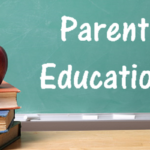S.T.E.M. is one of the acronyms du jour in the current public education debate. It stands for Science, Technology, Engineering, and Mathematics, which represent, some argue, the four areas that act as the foundation for America maintaining its preeminent position as world leaders in innovation and technological advancement. Some education reformers believe that these four disciplines are taking a hit in our public education system and explain the decline in achievement test scores among U.S. students compared to their peers worldwide. Given these concerns, it seems perfectly reasonable that these four subjects should be a primary focus of public education reform in America.
At the same time, I would suggest that an overemphasis on S.T.E.M. will cause other essential areas of education to suffer at a net cost to the next generations of students and our country as a whole. S.T.E.M. strikes me as offering too narrow a focus to produce a truly well-educated and balanced citizenry capable of being engaged members and vital contributors to all parts of our society. It also doesn’t offer enough to our students for the U.S. to continue to call itself a civilized culture. Though S.T.E.M. are essential ingredients to robust creativity and innovation, there are other equally important elements that should be included in the public education mix.
In place of S.T.E.M., I would recommend that we broaden our focus onto S.T.A.M.P.E.R (policy wonks do love their cute acronyms!) which stands for Science, Technology, Arts, Mathematics, Physical, Emotions, and Reason.
I keep Science, Technology, and Mathematics intact because they are inarguably essential components of the equation in which Quality Education lies to the right of the equal sign. But I left out Engineering for several reasons. First, because engineering is the practical offspring of science, technology, and mathematics, placing it along side them seems premature. Second, the specialized and applied nature of engineering appears better suited for college and graduate school programs which is where engineering now resides. It would seem that a comprehensive orientation toward science, technology, and mathematics in elementary and secondary schools would set the stage for excellence in engineering in post-secondary-school education.
Arts is a no brainer to me because of its perhaps not-so-obvious impact on scientific, technological, and mathematical thinking. New ideas and innovations, though sowed in the firmament of hard knowledge, blossom from the more ethereal creative flights of fancy that the arts encourages. Inventive thinking can not be “taught” in the traditional sense of the word, but it can be experienced and nurtured through the various forms of artistic expression.
I add Physical because our health and well being have become the rejected stepchild of public education despite its clear importance to individual achievement and societal vitality. At a time when childhood obesity is an epidemic and adult obesity is becoming the norm, many public schools have dropped physical education classes, ended recess, and continue to offer a cornucopia of junk food in cafeterias and vending machines, all in the name of budget cutting. These decisions are short sighted and counterproductive for both students and our society as a whole because, as the saying goes, without our health, we’ve got nothing.
I’ve added Emotions for the simple reason that there is no more important contributor to the success and happiness of individuals and the functioning of a society. Fear, frustration, anger, and despair are daily companions of young people all over the country (hopefully with some inspiration, joy, excitement, and happiness throw in there as well). Bullying, born of unresolved emotions, has created a toxic culture in schools and headlines in the news. And, despite its obvious importance, where do young people learn about emotions? From their parents? That is a scary thought given the apparent emotional capabilities of the current generation of parents. From popular culture? Another scary thought when you consider the unhealthy emotional role models portrayed on television, film, music, sports, and other media. As I travel the U.S. speaking at schools, I am amazed at how few have any sort of curriculum that systematically teaches students how to master their emotional lives.
Finally, when I talk about Reason I mean the ability to think logically and cogently. Reason involves the capacity to draw coherent conclusions and make rational decisions based on the available information. Reason allows people to minimize the pitfalls caused by the cognitive biases that researchers have demonstrated to govern so much of our thinking. Given that how we observe, interpret, and decide on information dictates just about everything we think, feel, and do in life, it seems incumbent on our educational system to help students harness their reason to make better decisions and life choices.
It just occurred to me that, to create a truly complete public education package, I should probably add an H. to the acronym for Humanities. But then I would be stuck with S.T.A.M.P.H.E.R. or S.H.A.M.P.T.E.R. And what kind of credible public-education-reform advocate would I be with a nonsense acronym!

